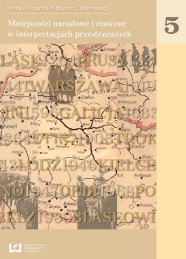Skład narodowościowy ludności Federacji Rosyjskiej na przełomie XX i XXI wieku
Ethnic composition of the population of Russian Federation at the turn of the 19th and 20th centuries
Author(s): Piotr EberhardtContributor(s): Jan Owsiński (Translator)
Subject(s): Regional Geography, Historical Geography, Recent History (1900 till today), 19th Century, Inter-Ethnic Relations, Ethnic Minorities Studies
Published by: Wydawnictwo Uniwersytetu Łódzkiego
Keywords: Russian Federation; demographics; nationalities; ethnic minorities;
Summary/Abstract: The paper presents the population numbers and the distribution of the particular national and ethnic groups, inhabiting the territory of the present-day Russian Federation. The basis for the statistical analysis was constituted by the data from three national censuses (1959, 1989, and 2010). Two former ones were carried out yet during the existence of the Russian SSR, while the last one was realised by the statistical services of the Russian Federation. These censuses concerned the very same territory, thus securing full comparability of results. The introductory part of the paper presents the characterisation of the administrative breakdown of the vast territory in question, encompassing 17 million sq. km. This characterisation is insofar important as some of the administrative units, for which the statistical data were determined, had been defined on the basis of the ethnic criteria. Then, the first part of analysis refers to the Soviet part of the period considered (1959–1989). These years were marked by a high demographic dynamics, which concerned both the Russian population and the numerous ethnic minorities. In the second part of analysis the changes are shown in the numbers and geographical distribution of the selected nationalities after the systemic changes and the disintegration of the USSR (1989–2010). The rate of demographic and ethnic changes in this period was highly differentiated in both ethnic and territorial aspects. There has been a total decrease in the numbers of Slavonic population, especially the Russian one, with a growth of numbers of some of the ethnic minorities. The high demographic increase concerned primarily the population of the Muslim extraction. This phenomenon is described and commented upon in the paper. After the presentation of the analysis for the entire country, detailed considerations have been carried out for the Autonomous Republics and National Districts. In the summary of the article, the adopted principles are characterised of the demographic and national politics in the Russian Federation, along with their political consequences.
Journal: Studia z Geografii Politycznej i Historycznej
- Issue Year: 2016
- Issue No: 05
- Page Range: 209-236
- Page Count: 28
- Language: Polish

